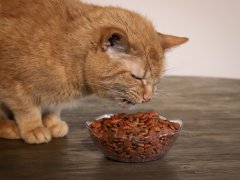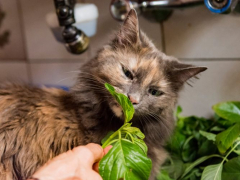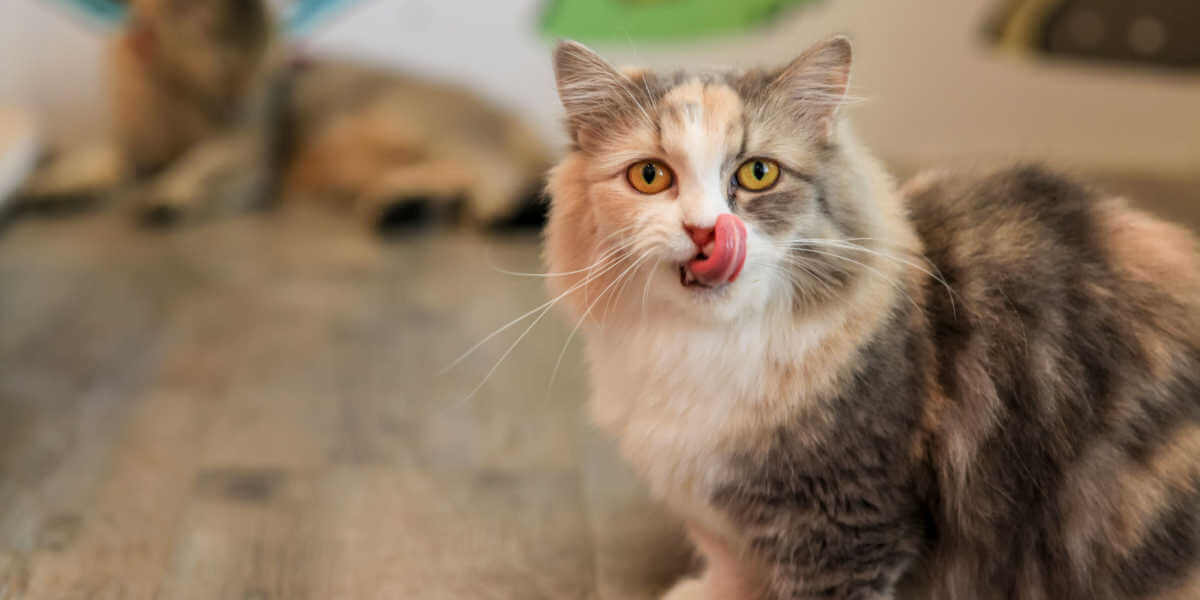
Phosphorus is an essential nutrient required by the body. However, high phosphorus intake through the diet is known to worsen the state of kidney disease in cats. Very recently, concerns have also arisen that diets high in phosphorus may contribute to the development of kidney disease in healthy cats.
In this article, you’ll learn more about phosphorus, why it is included in cat food, the latest research information on the association between high phosphorus diets and kidney disease, and some frequently asked questions.
Also Read: What’s The Best Food For Cats With Kidney Disease?
What Is Phosphorus?
Phosphorus is an essential mineral, present naturally in many foods. It is required for growth and repair of all tissues and for the production of DNA. Phosphorus is also needed to balance and assist with the use of other vitamins and minerals in the body including vitamin D, iodine, magnesium, and zinc.
The body seeks to keep phosphorus in balance with calcium. Within the body, calcium and phosphorus should be about equivalent in a ratio close to 1:1. Allowances can see calcium be higher at 2:1, but this ratio should never drop below 1:1. In other words, phosphorus should never be higher in the body than calcium.
Also Read: The Complete Feeding Guide From Kittens To Seniors
Why Does Cat Food Contain Phosphorus?
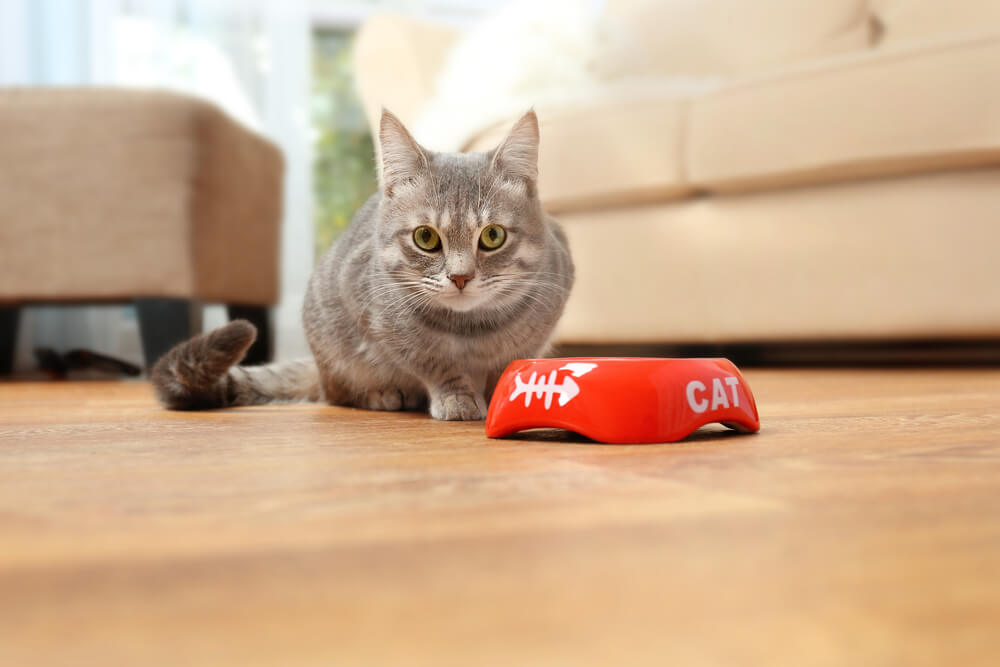
Phosphorus is commonly found in high protein foods such as meat.
Phosphorus can be divided into two main types: organic and inorganic. Organic phosphorus is phosphorus present naturally in many foods, but especially in grains and high protein foods like meat. As obligate carnivores, cats need a high protein content, and commercial cat foods (wet and dry food) often include high protein levels.
Canned cat food or wet foods that have higher proportions of meat content will naturally have higher levels of organic phosphorus. Raw diets composed primarily of meat and bone products will also have higher levels of organic phosphorus.
Inorganic phosphorus, at least in chemical terms, is when phosphorus is bound to another mineral like calcium, sodium, or magnesium. Inorganic phosphorus is also referred to as phosphate because of how it is bound to other minerals. Phosphates are most often included in foods as preservatives to extend shelf life and to add texture to foods to make them more enticing to eat. Examples of inorganic phosphorus include calcium monophosphate, sodium monophosphate and sodium dihydrogen phosphate.
Also Read: 7 Best Human Grade Cat Foods
How Much Phosphorus Do Cats Need?
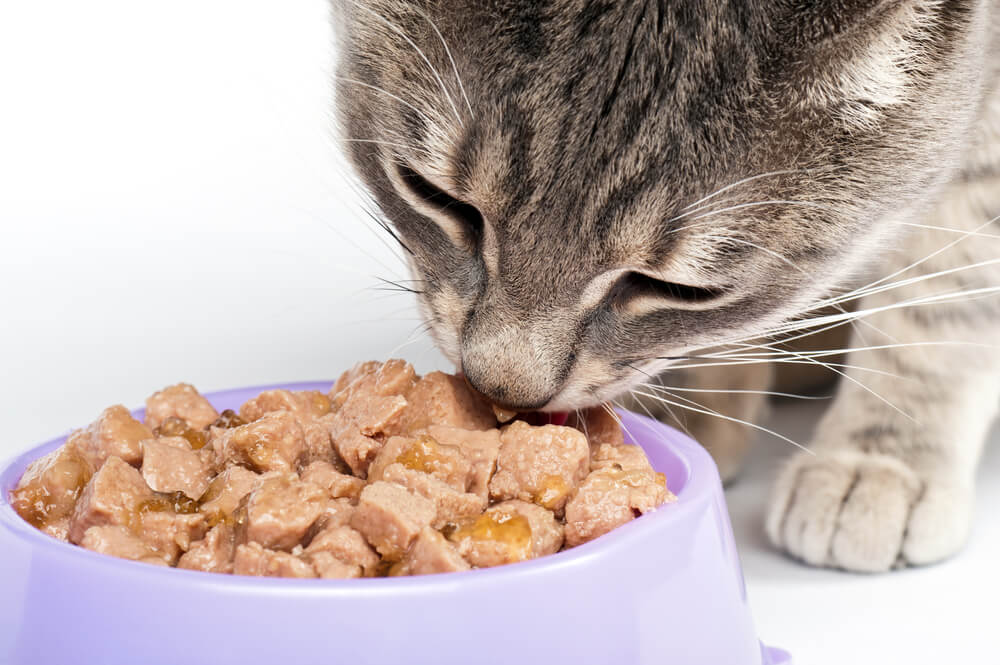
The AAFCO set recommended requirements for nutrients such as phosphorus.
The minimum amount of dietary phosphorus needed by cats has been researched a lot over time, has been established by the National Research Council (NRC) and is published in The Nutrient Requirements of Dogs and Cats from 2006. The NRC recommended daily allowance (RDA) is the basis upon which many pet diets are formulated.
The Association of American Feed Control Officials (AAFCO) bases its own nutrient guidelines on the NRC publications, though AAFCO provides updates more often. While pet food companies are not required to follow AAFCO guidelines on their own, many states have incorporated AAFCO feeding guidelines into law that help regulate how diets are formulated and manufactured.
The NRC and AAFCO both express their nutrient requirements a little differently which can be confusing, but in both cases they are expressed in a way that allows diets to be compared better to each other. The NRC expresses nutrients as grams per 1000 kilocalories of metabolizable energy (g/1000kcal ME).
AAFCO expresses nutrients both as the NRC does, as well as a percentage of dry matter (%DM). Percentage of dry matter standardizes comparison of diets by assuming all moisture content has been removed so that they can be compared on what is called a dry matter basis.
For the NRC, guidelines for feeding phosphorus are the following for adult cats and kittens:
- Adult Cats: Recommended Daily Allowance: 0.6g/1000kcal ME
- Minimum Allowance: 0.4g/1000kcal ME
- Kittens: Recommended Daily Allowance: 1.8g/1000kcal ME
- Minimum Allowance: 1.2g/1000kcal ME
For AAFCO, guidelines for feeding phosphorus are the following for adult cats and kittens:
- Adult Cats: Minimum Allowance: 0.5% dry matter 1.25g/1000kcal ME
- Kittens: Minimum Allowance: 0.8% dry matter 2.0g/1000kcal ME
Nutritional requirements vary with different lifestages, to optimize health and wellness. You probably noticed that recommended phosphorus amounts are higher for kittens versus adults. This is due to how much more phosphorus is needed for development of bone and tissues in these growing animals. For pregnant queens, feeding amounts are similar as for kittens, since they are supporting the growth of one or more kittens.
There are no specific guidelines for senior cats as their nutritional needs can vary a lot. The interpretation of dietary needs for senior cats likewise varies quite widely among pet food manufacturers.
The true dietary needs of any senior cat depends largely on their state of health and any disease states they have that require dietary change. As an example, a healthy 7 year old cat who is considered a “senior” may be just as healthy as when they were 6 years old and considered an “adult”. But a 15 year old senior cat with kidney failure, heart disease, or diabetes paints a very different picture for nutritional needs.
You may have also noticed in the guidelines that there are no maximum levels of phosphorus that are advised. And herein lies the concern we’ll be talking more about.
Also Read: How Much Should Cats Eat And How Often
Are There Upper Phosphorus Limits?
There are no specific upper safe limits to dietary phosphorus that have been firmly established by the NRC, AAFCO, or FEDIAF, which is Europe’s AAFCO equivalent. However, the 2006 NRC publication provides a range of expected safe upper limits which is 2.5-3.5 g/1000kcal ME. This assumes an appropriate dietary ratio of calcium content to phosphorus content.
Can a High Phosphorus Diet Harm My Cat?
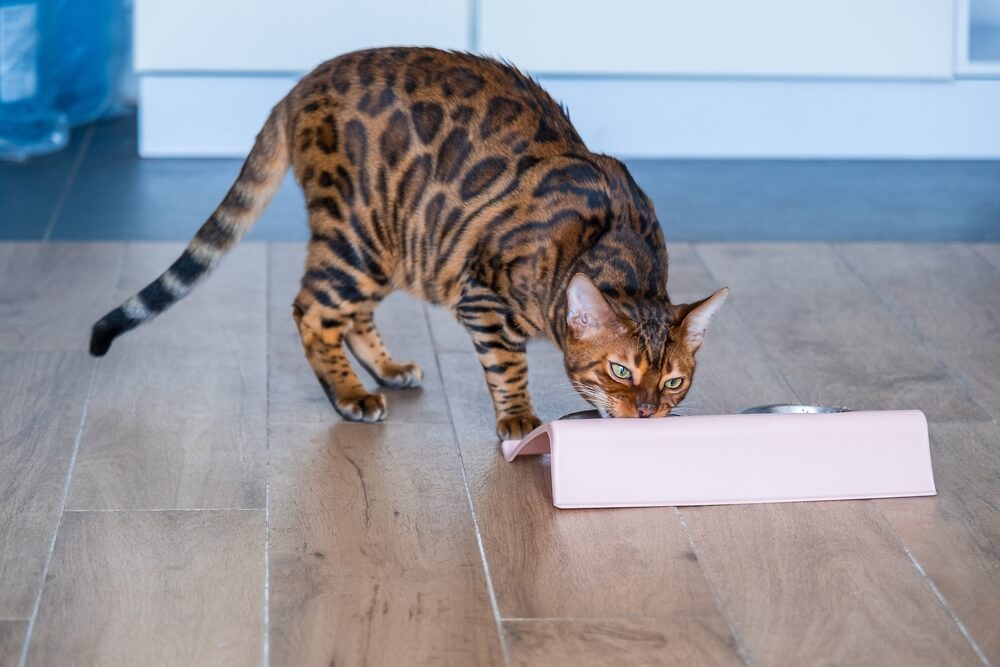
High dietary phosphorus levels have been linked to kidney disease in cats.
While phosphorus is an essential mineral, too much of it can definitely be detrimental. For many years, diets high in protein and phosphorus have been shown to worsen the state of existing chronic kidney disease (CKD) in cats. This has led to a main therapeutic approach of feeding a diet lower in dietary phosphorus and sodium with high-quality protein as well as a neutral pH for cats in renal failure.
CKD in cats is not a very well-understood process. Initially, research focused on the role of protein in renal disease, with some veterinary diets adopting a low protein approach to try and prevent progression from the early stages of kidney disease. Although there may be many different underlying causes that have nothing to do with diet, there has been a lot more research conducted to look at the effect of dietary phosphorus on the kidney health of otherwise healthy cats in just the last 4-5 years.
A landmark study published in 2018 set the ball rolling for further follow-up studies to look more closely at dietary phosphorus in cat foods. Published in the Journal of Feline Medicine and Surgery, researchers found that feeding a diet very high in phosphorus (about 5 times that of the recommended allowances by the NRC) to healthy cats showed markers of kidney damage were seen after only 30 days. The diets were freshly prepared, but calcium and sodium monophosphate were both used to reach the high phosphorus level.
The same year this study was published, petfoodindustry.com published a short article entitled “High phosphorus cat food may hurt kidneys”, citing recent findings from the study.
Since then, several other studies have come out looking at particulars of how dietary phosphorus may be impacting a cat’s kidneys and how high they would have to be to present a concern.
A couple of the same authors from the landmark study published another the same year looking at types of inorganic phosphates included in cat foods. Their findings supported that inorganic phosphates have a much higher bioavailability and absorption than organic phosphorus and that sodium monophosphate led to higher stress on the kidneys than calcium monophosphate.
In the British Journal of Nutrition, researchers found that feeding a diet with an inorganic phosphate content of 3.6g/1000kcal combined with a low calcium-to-phosphorus ratio led to changes in the kidneys and ill effects within 4 weeks. Interestingly, a normal calcium to phosphorus ratio did not lead to these changes. These findings highlighted the importance of not just the total phosphorus level in food, or how much is inorganic vs. organic, but also the balance of calcium and phosphorus in the diet.
The next year in 2019, a study published in the Journal of Veterinary Internal Medicine evaluating phosphorus content in commercially available cat foods presented the concerning findings that 33% of the 82 diets they analyzed had phosphorus content exceeding 3.6g/ 1000kcalME.
They also stated some of the following conclusions:
- High protein diet categories had a higher proportion of phosphorus above levels shown to cause kidney dysfunction in healthy cats.
- There were no correlations between non-traditional protein foods and phosphorus (foods containing exotic protein sources like kangaroo or rabbit).
- There were no correlations between canned foods alone and high phosphorus.
- An inverse ratio of calcium to phosphorus may indicate a higher proportion of inorganic phosphorus is included in the diet.
- 7 diets contained phosphorus greater than 4.8g/1000kcal ME, with most being raw diets containing high protein and bone derivatives.
- There was no correlation between diet price and higher or lower phosphorus foods.
The same year in 2019, a study published in Veterinary Medicine and Science looked more specifically at phosphorus content in commercial wet foods for cats. Researchers evaluated 35 commercial wet foods from Europe. All contained phosphorus (and sodium) levels above minimum requirements set by FEDIAF.
While exceeding minimum requirements is common to ensure adequate phosphorus intake, 5 of the 12 diets evaluated for cats exceeded the 3.6g/1000kcal of phosphorus that has been described in many of these research studies.
In 2020, researchers looked at different types and amounts of dietary phosphorus on the kidney health of cats, publishing their findings in the Journal of Veterinary Internal Medicine. Their main takeaway finding was that an inverse or low calcium-to-phosphorus ratio combined with use of highly soluble inorganic phosphates are associated with markers of kidney injury.
These researchers also concluded a couple of other important points:
- There was no evidence that universally connects commercial diets with kidney injury. However, some commercial diets contain high amounts of phosphorus relative to recommendations and have low calcium-to-phosphorus ratios.
- Increases in blood serum phosphorus occur when highly soluble phosphates containing sodium are added to diets in amounts equal to or greater than 0.5g of phosphorus per 1000kcal ME.
- Any association between dietary phosphorus and blood serum phosphate levels are weak. Serum phosphate represents only 1% of total body phosphorus, which can be affected by intestinal absorption and movement in and out of bones and cells.
- Bioavailability in sources of phosphorus can vary widely and the calcium to phosphorus ratio of a diet also affects phosphorus levels.
Also Read: Cat Calorie Calculator
Should Senior Cats Eat a Low Phosphorus Diet?
Currently, the effects of phosphorus on senior cats versus young adult cats have not been evaluated. However, the research studies we just reviewed looked at the effect of high phosphorus on healthy cats and a senior cat that has no diseases being treated may be just as healthy as an adult cat.
What is most important is to realize that older cats are more prone to developing chronic disease and early detection is key to better outcomes and longevity. If kidney disease is detected early either through the SDMA test or suspected from a low urine specific gravity, immediate efforts should be made to feed a low phosphorus cat food. Other interventions for renal support include maintaining hydration through increased water intake such as by changing from kibble to a wet diet.
How To Find the Phosphorus Content of Your Cat’s Food
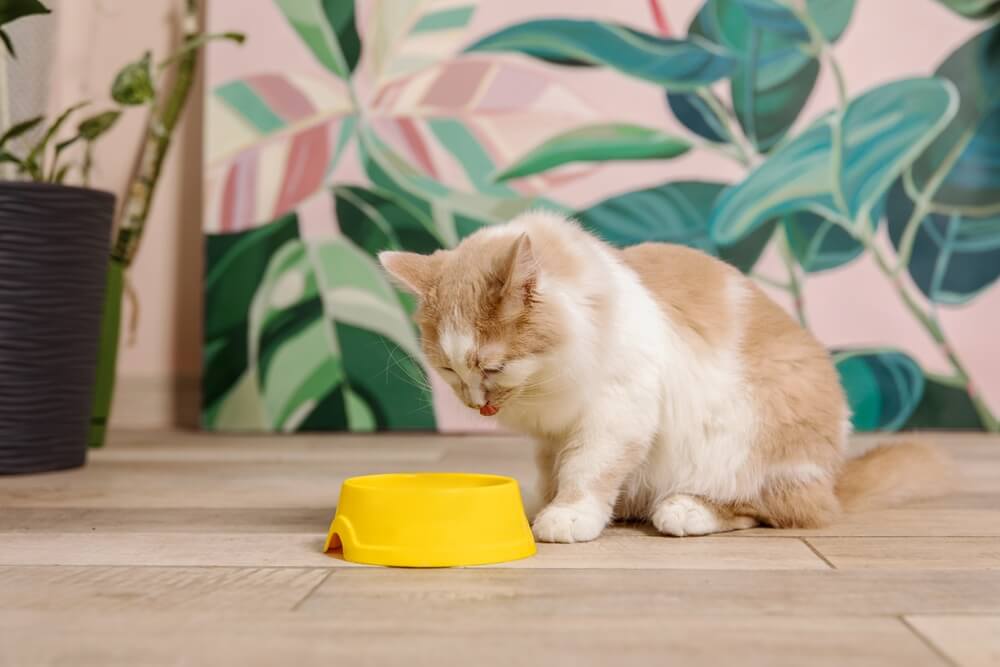
Interpretation of dietary ingredients in commercial cat foods can be difficult.
Currently, finding out the phosphorus content in any pet’s diet is difficult. If you look at a pet food label, you can find the guaranteed analysis that includes the percentage of protein, fat, and carbohydrates. You will also find the ingredients list. However, unlike labels for human foods, there is no full breakdown of the percentages or amounts of vitamins, minerals, and other ingredients.
However, this is likely in the process of changing. According to a November 2022 article written by the Tufts University Cumming’s School of Veterinary Medicine Clinical Nutrition Service, AAFCO is proposing dramatic changes to pet food labels. The “Guaranteed Analysis” section on the label will be replaced by “Pet Nutrition Facts” that will have expressed amounts of individual ingredients. These changes are expected to start to be seen in 2023 or 2024.
But even with these changes, determining phosphorus levels or calcium-to-phosphorus ratios at home would still be difficult. We know inorganic phosphorus is more implicated in kidney disease. But although preliminary attempts have been made, no reliable method currently exists to distinguish between organic phosphorus and inorganic phosphorus in pet food analysis.
In addition, ingredient labels often list minimum amounts of nutrients to ensure against deficiencies. But maximums are less commonly included and until safe maximums are firmly established for phosphorus, pet parents will have no idea what the phosphorus level in the diet actually is.
The only exception is for prescription veterinary diets with formulation for pets with kidney disease. These renal diets must be formulated to have a limited maximum amount of phosphorus (and a minimum level of calcium), and you will find these minimum and maximum percentages in the Guaranteed Analysis section of these diets.
Also Read: The Best Homemade Cat Food Recipes For Kidney Disease
How Do I Choose a Diet for My Cat?
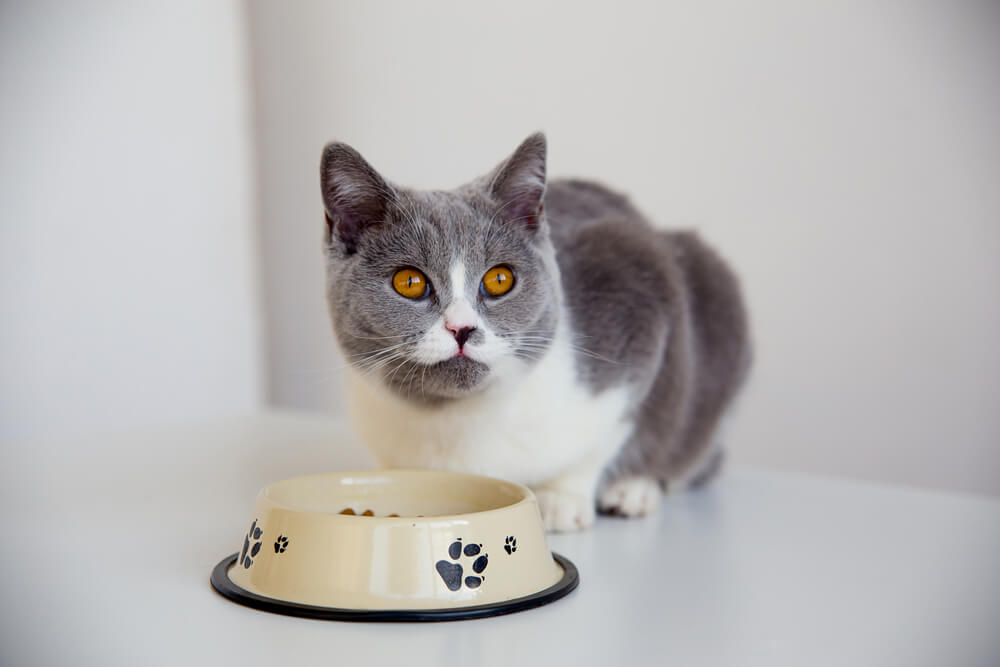
Your cat’s dietary needs will vary based on their life stage and health.
There isn’t just one type of diet or brand of food that can be avoided. Research has proven that there is a high degree of variability among diet types when it comes to phosphorus levels.
Most phosphorus is important and needed by the body, but research has shown that inorganic phosphates and especially phosphate salts like monosodium phosphate are more associated with kidney injury.
You can look on the ingredients list on the food label to see if a sodium salt phosphate is included. While research has demonstrated safe levels, avoiding sodium salts in favor of calcium salts could be considered.
Raw diets may not be the answer, given their high phosphorus levels from meat and bone. These are organic sources, but high levels of organic sources of phosphorus have not been fully evaluated. Home-cooked diets are not the ticket either. A 2019 study in the Journal of the Veterinary Medical Association found that of 114 homemade cat diet recipes evaluated, none of them fully met NRC-recommended daily allowances.
However, fresh-made home delivery diets may hold promise. Diets from companies like Smalls, The Honest Kitchen, Raised Right, and JustFoodForCats all provide fresh ingredients that are nutritionally balanced but contain few if any preservatives.
Consultation with a board-certified veterinary nutritionist can also be considered to help ensure that a home-cooked diet is nutritionally balanced.
Also Read: How To Put A Cat On A Diet?
Conclusion
While a vital nutrient required by the body, phosphorus can be detrimental if levels too high are provided in the diet. Amounts of phosphorus exceeding 3.6g/1000 kcal ME have been found to cause kidney injury, in combination with diets containing high levels of sodium salt phosphates and low calcium to phosphorus ratios.
Recent studies in the last couple of years have shown that there are many commercial diets that have levels of phosphorus exceeding the 3.6g/1000 kcal ME. While there can be many underlying causes of kidney disease in cats, high dietary phosphorus, sodium salt phosphates, and low calcium to phosphorus ratios could be contributing to kidney disease developing in some cats.
While these characteristics cannot be attributed to any one particular type of diet or brand of food, diets could be carefully selected at home based on the presence of sodium salt phosphate-based preservatives. It is also important to remember that these same concerns can also occur in homemade diets, though more research is needed to look at the effects of high amounts of organic phosphorus in the diet.
The presence of high phosphorus in pet foods and its effect on kidney function in cats continues to be a focused area of research. These research findings are leading to calls for reform for commercial diets to more closely follow recommended phosphorus allowances and appropriate calcium to phosphorus ratios.
The best big step would seem to be for the NRC, AAFCO, and FEDIAF to establish a safe upper limit of dietary phosphorus as well as stricter calcium to phosphorus ratio guidelines for commercial foods. However, AAFCO’s call for more transparent food labelling in pet diets, seen as soon as 2023 to 2024, may be a first step to help pet parents select diets and veterinarians to advise what to feed for the best health and safety for their patients.
Also Read: 10 Most Dangerous Diseases In Cats
-
Association of American Feed Control Officials. “AAFCO Methods for Substantiating Nutritional Adequacy of Dog and Cat Foods”. Accessed April 13, 2023. https://www.aafco.org/wp-content/uploads/2023/01/Model_Bills_and_Regulations_Agenda_Midyear_2015_Final_Attachment_A.__Proposed_revisions_to_AAFCO_Nutrient_Profiles_PFC_Final_070214.pdf
-
Alexander, J., Stockman, J., Atwal, J., Butterwick, R., Colyer, A., Elliott, D., . . . Watson, P. (2019). Effects of the long-term feeding of diets enriched with inorganic phosphorus on the adult feline kidney and phosphorus metabolism. British Journal of Nutrition, 121(3), 249-269. doi:10.1017/S0007114518002751. https://www.cambridge.org/core/journals/british-journal-of-nutrition/article/effects-of-the-longterm-feeding-of-diets-enriched-with-inorganic-phosphorus-on-the-adult-feline-kidney-and-phosphorus-metabolism/704FCCEB81D99545C0ACA036D3515292
-
Barrett, DC. Calcium and Phosphorus for Cats and Dogs. 1988. Can Vet J. 29: 751-752. https://www.ncbi.nlm.nih.gov/pmc/articles/PMC1680828/pdf/canvetj00574-0077.pdf
-
Böswald LF, Kienzle E, Dobenecker B. Observation about phosphorus and protein supply in cats and dogs prior to the diagnosis of chronic kidney disease. J Anim Physiol Anim Nutr (Berl). 2018 Apr;102 Suppl 1:31-36. doi: 10.1111/jpn.12886. PMID: 29623690. https://pubmed.ncbi.nlm.nih.gov/29623690/
-
Brunetto, MA, Zafalon, RVA, Teixeira, FA, et al. Phosphorus and sodium contents in commercial wet foods for dogs and cats. Vet Med Sci. 2019; 5: 494– 499. https://doi.org/10.1002/vms3.183
-
Dobenecker, B, Hertel-Böhnke, P, Webel, A, Kienzle, E. Renal phosphorus excretion in adult healthy cats after the intake of high phosphorus diets with either calcium monophosphate or sodium monophosphate. J Anim Physiol Anim Nutr. 2018; 102: 1759– 1765. https://doi.org/10.1111/jpn.12982
-
Dobenecker B, Webel A, Reese S, Kienzle E. Effect of a high phosphorus diet on indicators of renal health in cats. J Feline Med Surg. 2018 Apr;20(4):339-343. doi: 10.1177/1098612X17710589. Epub 2017 Jun 1. PMID: 28569079. https://journals.sagepub.com/doi/pdf/10.1177/1098612X17710589
-
Ellen Kienzle, Claudia Thielen, Claudia Pessinger, Investigations on Phosphorus Requirements of Adult Cats, The Journal of Nutrition, Volume 128, Issue 12, December 1998, Pages 2598S–2600S, https://doi.org/10.1093/jn/128.12.2598S
-
Elliot J, Rebecca F. Geddes. New concepts in phosphorus homeostasis and its impact on renal health with particular reference to the cat. The Veterinary Journal, Volumes 283–284, 2022, 105842. ISSN 1090-0233, https://doi.org/10.1016/j.tvjl.2022.105842.
-
Ephraim E, Jewell DE (2021) High Protein Consumption with Controlled Phosphorus Level Increases Plasma Concentrations of Uremic Toxins in Cats with Early Chronic Kidney Disease. J Food Sci Nutr 7: 096. DOI:10.24966/FSN-1076/100096
-
Geddes, R.F., Finch, N.C., Syme, H.M. and Elliott, J. (2013), The role of phosphorus in the pathophysiology of chronic kidney disease. Journal of Veterinary Emergency and Critical Care, 23: 122-133. https://doi.org/10.1111/vec.12032
-
Heinze, CR. Dramatic Changes to Pet Food Labels Proposed by AAFCO. Petfoodology. Clinical Nutrition Service, Cummings School of Veterinary Medicine, Tuft University. Published November 20, 2022. Accessed April 20, 2023. https://vetnutrition.tufts.edu/2022/11/dramatic-changes-to-pet-food-labels-proposed-by-aafco/
-
Laflamme, D, Backus, R, Brown, S, et al. A review of phosphorus homeostasis and the impact of different types and amounts of dietary phosphate on metabolism and renal health in cats. J Vet Intern Med. 2020; 34: 2187– 2196. https://doi.org/10.1111/jvim.15961
-
Mt. Sinai. “Phosphorus”. Accessed April 13, 2023. https://www.mountsinai.org/health-library/supplement/phosphorus#:~:text=Phosphorus%20is%20needed%20for%20the,iodine%2C%20magnesium%2C%20and%20zinc.
-
National Institutes of Health Office of Dietary Supplements. “Phosphorus: Fact Sheet for Health Professionals”. Accessed April 13, 2023. https://ods.od.nih.gov/factsheets/Phosphorus-HealthProfessional/
-
NOM NOM NOW. “Low Phosphorus Cat Foods for Kidney Disease”. Accessed April 13, 2023. https://www.nomnomnow.com/learn/article/low-phosphorus-cat-foods-for-kidney-disease#:~:text=American%20Association%20for%20Feed%20Control,levels%20are%20for%20normal%20diets.
-
NRC Nutritional Requirements for Adult Cats. Perfectly Rawsome. Accessed April 13, 2023. https://perfectlyrawsome.com/raw-feeding-knowledgebase/nrc-nutritional-requirements-for-adult-cats/
-
NRC Nutritional Requirements for Kitten Development. Perfectly Rawsome. Accessed April 13, 2023. https://perfectlyrawsome.com/raw-feeding-knowledgebase/nrc-nutritional-requirements-for-kittens/
-
PetFood Industry.com. “High phosphorus cat food may hurt kidneys”. Published March 2018. Accessed April 13, 2023. https://www.petfoodindustry.com/articles/7069-high-phosphorus-cat-food-may-hurt-kidneys
-
Summers, SC, Stockman, J, Larsen, JA, Zhang, L, Rodriguez, AS. Evaluation of phosphorus, calcium, and magnesium content in commercially available foods formulated for healthy cats. J Vet Intern Med. 2020; 34: 266– 273. https://doi.org/10.1111/jvim.15689
-
Wilson, S. A., Villaverde, C., Fascetti, A. J., & Larsen, J. A. (2019). Evaluation of the nutritional adequacy of recipes for home-prepared maintenance diets for cats, Journal of the American Veterinary Medical Association, 254(10), 1172-1179. Retrieved Apr 27, 2023, from https://doi.org/10.2460/javma.254.10.1172
